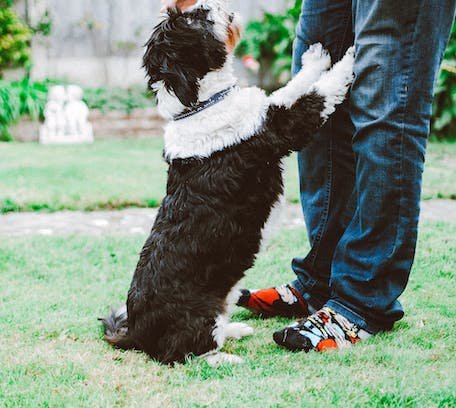Even though on the surface, it would seem that all you need to do to ensure a dog is happy and healthy is to take them on walks, feed and water them and give them toys. But if you want to truly connect and bond with your dog, then you need to do more.
So, with that being said, continue reading to discover some fascinating facts to help you understand and empathize with your beloved pet pooch.
Study the Movement of Their Ears
Your dog’s ears are one of the easiest ways to tell how your dog is feeling and to better understand what scares them and, conversely, what excites them, as unlike human beings, their ears are used for much more than hearing and balance.
If your dog’s ears are pointing backward, then this almost unequivocally means that they are scared and anxious, so the key here is to make quiet and soft movements toward him/her and start to pet their head to calm them down.
When their ears are erect, your dog’s interest has been peaked, usually by something outside of the room, and they will be doing everything they can to listen to what is happening and decide their next move. When training your dog, if their ears are erect, then this shows that you have their complete attention. If you would like more information about training your dog as well as properly caring for them, you can contact a reputable veterinary clinic, such as ortinganimalhospital.com.
Dogs Have Facial Expressions Too!
You may well have noticed in the past that once you have caught your dog in the act of doing something naughty, such as chewing your favorite shoes or stealing a slice of ham from your dinner plate, they tend to look down to the floor with their head and look sorrowful.
This is, to be honest, can sometimes be an act of manipulation on the part of your dog, who has learned that the classic ‘puppy dog eyes’ will always get them out of trouble or, at least, reduce the level of trouble they have found themselves in.
Taking the time to study the facial expressions of your dog will greatly extend the level at which you can better understand them. For example, if their facial muscles are tense and their pupils are constricted, then this shows anger, and it would be a good idea to stop what you are doing and let them calm down.
It’s All About the Tail!
Finally, the third thing you should focus on when observing and interacting with your dog is the tail. There is perhaps no better way to judge the mood of your dog than the position of their tail, which is why it is hilarious to see dogs in movies that appear to be aggressive in a scene, wagging away in front of the cameras – the tail tells the truth!
A pointed doggy tail means your dog is happy, confident, and enjoying the moment; a tail tucked between the legs of your dog means they are scared or, at the very least, uncertain, and essentially, a wagging tail equals a happy dog!
